Please note that this post may contain affiliate links. You can read my full affiliate disclosure at the bottom of the page.
Is a Manjula Pothos the same as a Marble Queen Pothos? This is a common question that comes up due to the extreme amounts of variegation in both of these types of Pothos plants. But they are not the same plant and there are some differences when it comes to the Manjula vs Marble Queen Pothos that will make the two plants become strikingly different when you look at them both. In this article, we go over the differences between the Manjula Poths and the Marble Queen Pothos.
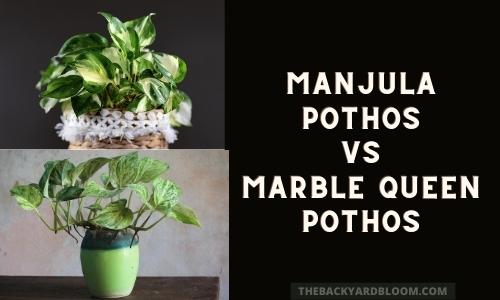
The Difference Between Marble Queen Pothos and Manjula Pothos Plants
There are some major differences between the two. Mainly you will find the differences in the leaf structure. Manjula’s were specifically bred in a planned program from Epipremnum pinnatum ‘Compacta’. This gives it a distinct leaf that makes it stand apart from other Pothos plants.
Find Care Guides for these Pothos Plants:
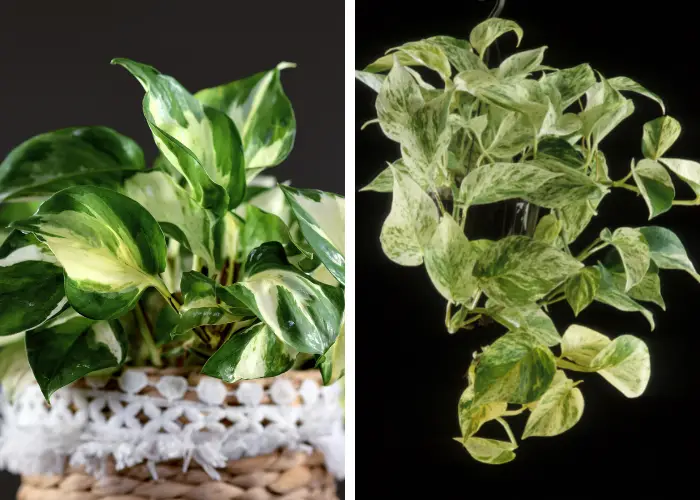
How can you tell the difference between a Marble Pothos Queen and Manjula?
- Leaf Curl
- Leaf Thickness
- Leaf Shape
- Growth Rate
- Variegation
- Shine
- Internode Length and Compactness
The Differences Explained
Leaf Curl
The biggest difference that you will notice is in the curl of the leaves of these two plants. The Manjula has a curl or wave to its leaves while the Marble Queen has a more traditional wave of a Pothos leaf.
Leaf Thickness
The other difference between the leaves is the thickness. Manjula Pothos tend to have a thick leaves. While the Marble Queen has thinner leaves, like that of a Golden Pothos.
Leaf Shape
The third leaf difference is the shape of the leaf on the plant. Manjula leaves have a spade-like shape. Whereas the Marble Queen has a more elongated leaf, as you find on many of the more common varieties such as Jade Pothos or Golden Pothos.
Growth Rate
The fourth difference between the Marble Queen and Manjula is the growth rate. The Manjula is known for its slow growth rate. The Marble Queen however is a faster-growing Pothos plant.
Variegation
Another difference will be the variegation on the leaves. The Marble Queen is known for its speckled variegation on the leaves, which almost looks as if somebody splattered green paint on the leaf. The most that this variegation will differ on a Marble Queen is the color of the area without variegation and the amount of green on the leaf. The Manjula on the other hand can have a wide variety of variegation. It can range from large patches of green to little specks. Manjula’s will also have different shades of greens on some of their leaves.
Shine
The leaves of a Manjula have a shine to them that you will not see on a Marble Queen. It is almost like the Manjula is a gloss paint while the Marble Queen is a flat paint.
Internode Length and Compactness
The final difference is the compactness and internode length of the Manjula. When they grow initially they are a mounding plant because of the short internode length of the cultivar. It is only after a long time of growth that they begin to trail. Marble Queen Pothos on the other hand will start to grow as a trailing plant right away because it has a bigger distance between the leaves as it grows.
Pictures of Manjula Pothos vs Marble Queen Pothos for a Visual Guide
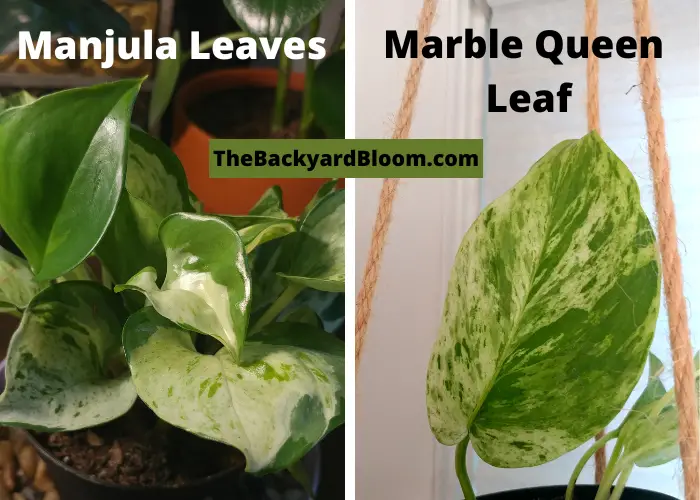
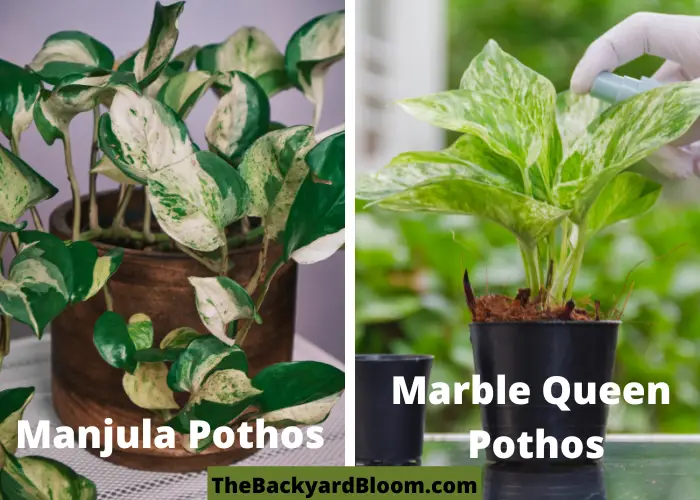
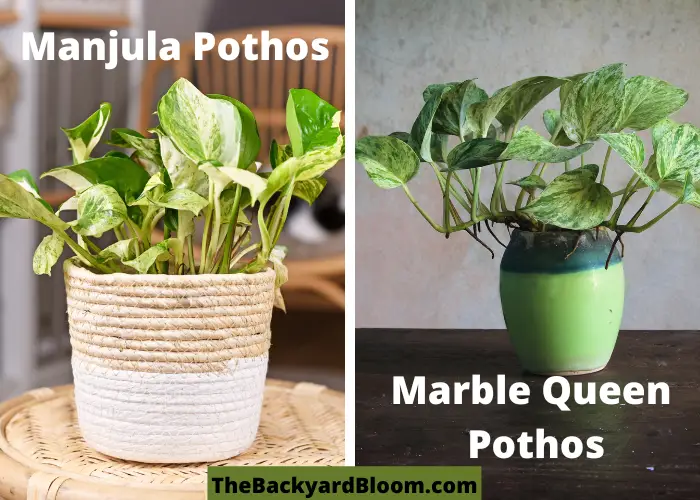
Related Articles for “Manjula Pothos Vs Marble Queen Pothos“:
References:
- Epipremnum plant named ‘HANSOTI14’; Google Patents; https://patents.google.com/patent/USPP27117P3/en?oq=PP27117